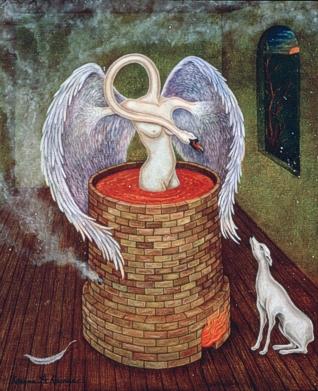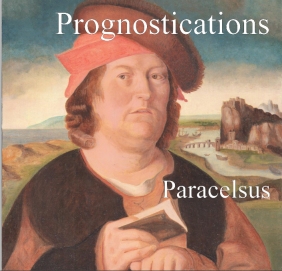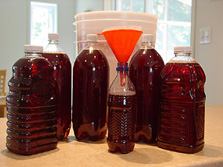
|
WINE VINEGAR
After having aged our wine at least a
year, it was allowed to pass through
a secondary fermentation in which
we successfully received our vinegar
mother. In two months our wine was
converted into a delicious vinegar.
Having racked the vinegar off from
its sediments, it was found to be
very good and very clean tasting. Its
body was pure and clean as can be
seen through its clarity. It was found
to have become an excellent vinegar,
with a wonderful inviting bouquet.
|

|
MOTHER OF VINEGAR
To see the mother of vinegar forming
is very interesting. Simply place the
wine in an open container just a little
over half full. This will allow for the
the process of the of a secondary
fermentation. Add water in ratio of
of 1 parts water to 3 parts wine.
Placing into the wine a piece of bread
will facilitate the development of the
mother. Cover container with cloth.
|
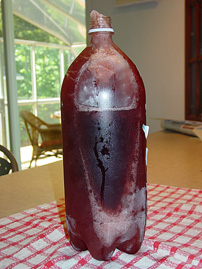
|
FROZEN VINEGAR
The vinegar was placed into plastic
two liter pop bottles. A space was
allowed for the expanding ice, and
the bottles were placed for 24 hours
into the freezer. We can see here
that the mostly watery part of the
vinegar is frozen, while the acetic
part is not. We must keep in mind
that water has a higher freezing
point than acetic acid. This allows
for us the distillation of the acetic
acid from our vinegar through a
freezing method. The ancient
alchemists used to do this work in
the coldest parts of winter.
|
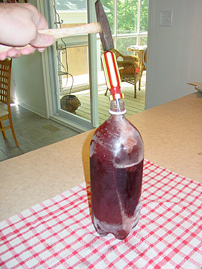
|
PUNCTURING THE ICE
A passage must be made for the
more acetic unfrozen part so it
can flow through the frozen
water as an ice blockage. A
simple screwdriver struck though
the center of the ice build up will
cause a hole deep enough to allow
the more concentrated vinegar to
flow through.
|
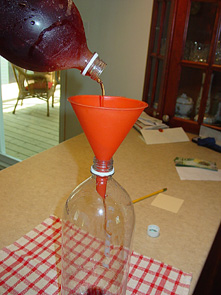
|
POURING OUT CONCENTRATE
The unfrozen more concentrated
and more acetic liquid part is
poured over into a new container.
|
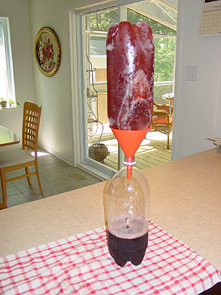
|
DISTILATION SET UP
After all the liquid concentrated
unfrozen part has been poured
over, invert the entire icy watery
vinegar over on top of the new
container using a funnel to hold
in place the top container. It is
advised to place this set up in a
corner of two adjoining walls of
a room so that it holds in place
as weights shift when ice melts.
Allow the distillation to proceed
for three to four hours as the
more concentrated acetic acid
will accumulate through the
continuous drippings in drops.
|
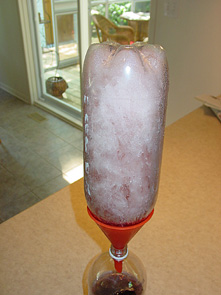
|
CLEARED ICE
Judging by sight, it is easily
seen when the most part of
the acetic acid has gone over
into the new container leaving
the phlegm (water) behind
seen as an ice sludge stuck in
the original container.
|
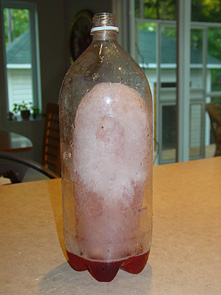
|
PHLEGM
The large piece of ice left
over is clear evidence that
a separation of the phlegm
(water), has been achieved
and the first distillation
was had.
|
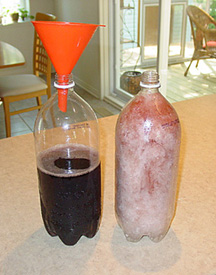
|
THE SEPARATION
What is seen here is
depicting the result of the
first distillation of six liters
of vinegar. There now still
remains four liters to be
distill. So we can easily
judge that out of ten liters
there will result two liters
of a more pure acetic acid.
The resulting two liters
then will pass through a
second freeze distillation.
We can even work through
a third if we wanted to,
which would already yield
an acetic acid strong enough
for working the "Way of the
Acetate".
|

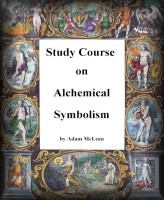 Study Courses
Study Courses
